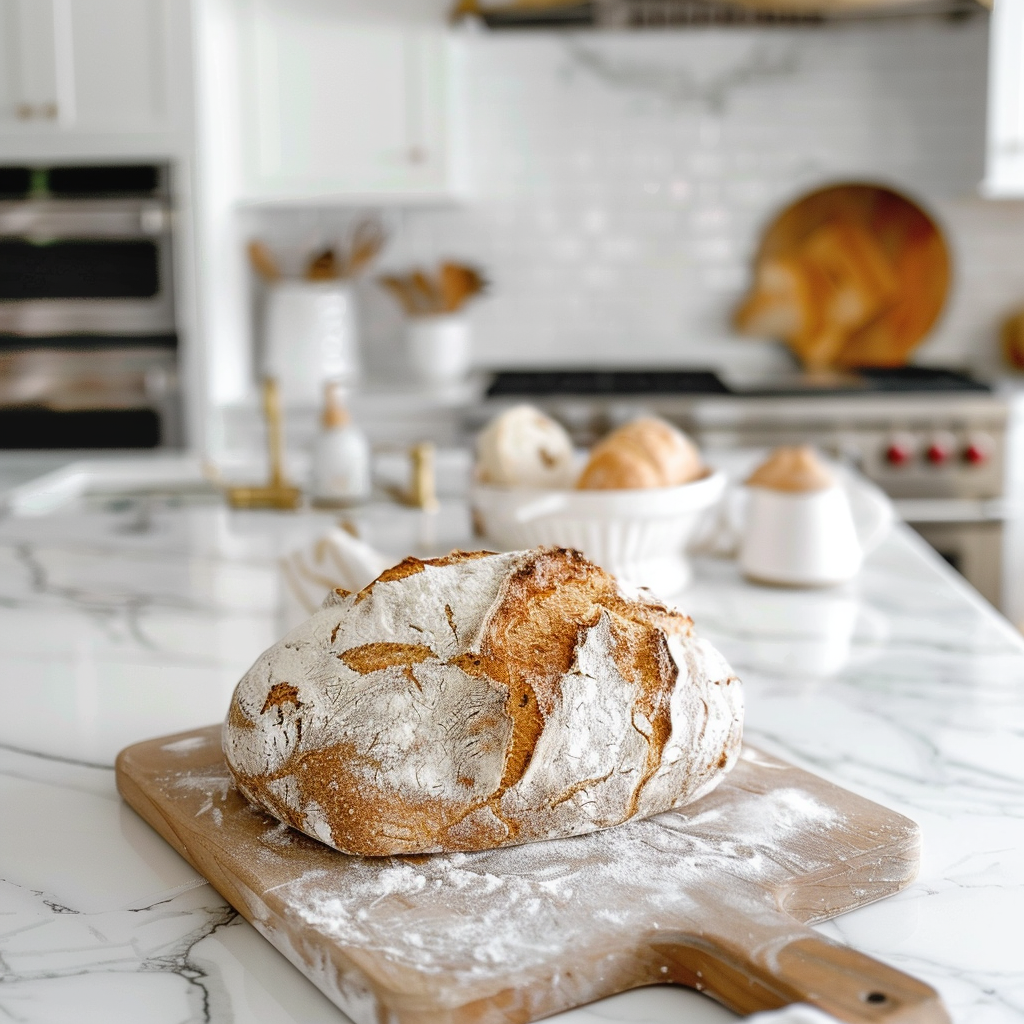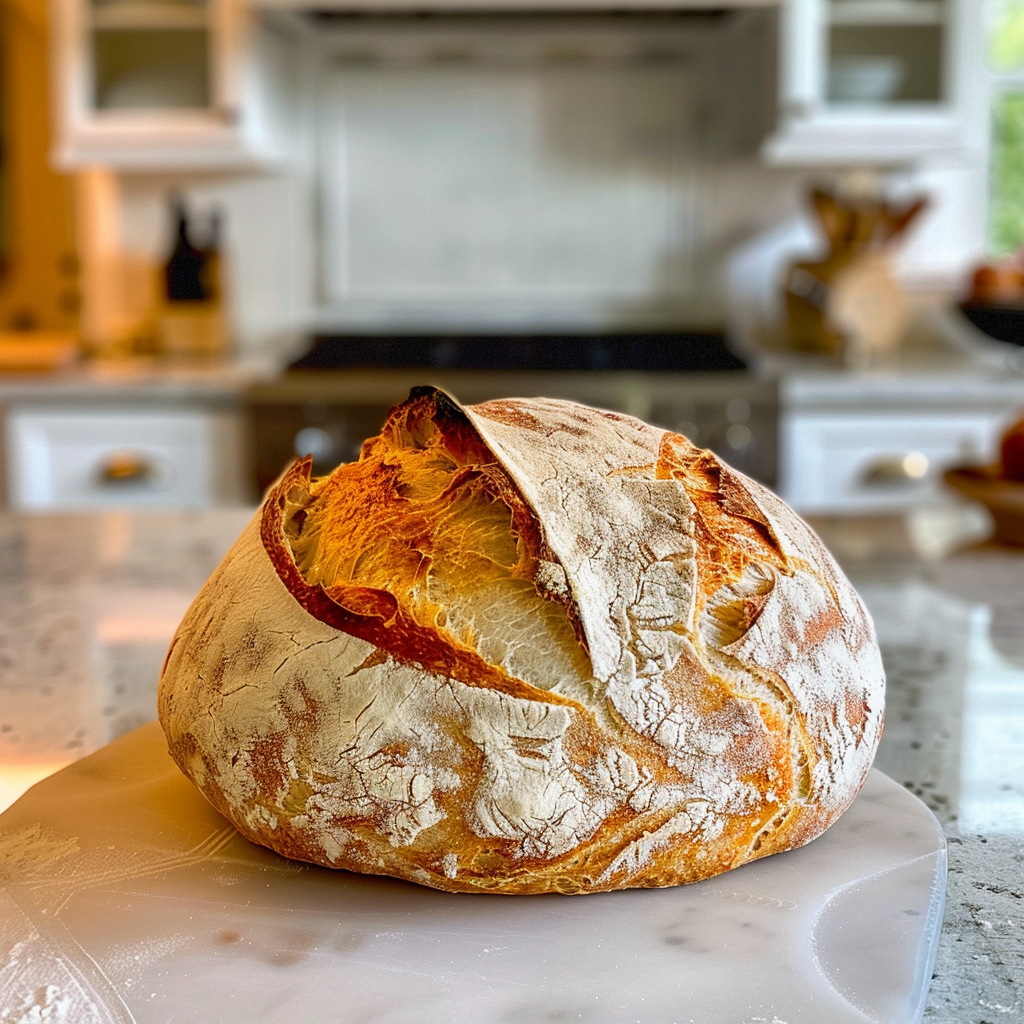Hey there, I’m Jacob Allen, your food explorer from Beyond The Bayou Blog! Today, I tried making a simple Artisan Bread recipe that takes me back to sunny places. It’s like a flavor party with fresh veggies, tasty herbs, and a bit of olive oil.
As I mixed the ingredients, I remembered walking around colorful markets. I once tasted this bread in a cozy café. The colors and smells were amazing!
That inspired me to make my own Artisan Bread recipe. Let’s bake and enjoy a taste of the Mediterranean together! Want more Mediterranean food ideas?
History of Artisan Bread Recipe
Artisan bread recipes have roots in traditional European baking, emphasizing handcrafted techniques and quality ingredients. They’ve seen a resurgence in modern times, prioritizing longer fermentation and unique flavors. This movement celebrates craftsmanship and natural ingredients, offering a flavorful alternative to mass-produced bread.
Overview: How to Make Artisan Bread Recipe?

Making artisan bread at home is easy and delicious. With just flour, salt, yeast, and water, you can create a crusty, flavorful loaf that beats store-bought bread any day.
Start by mixing flour and salt, then add yeast to warm water until it’s bubbly. Combine everything to form a dough, let it rise until it doubles in size, then shape it into a loaf and bake until golden brown.
Once baked, let it cool before slicing. Enjoy it with butter or use it for sandwiches. It’s a simple recipe that brings the magic of freshly baked bread to your kitchen.
Artisan Bread Recipe
Equipment
- Large mixing bowl
- Measuring Cups
- Measuring Spoons
- Kitchen Scale
- Baking stone or overturned baking sheet
- Parchment Paper
- Sharp Knife
- Wire rack
Ingredients
- 500 g Bread flour
- 10 g Salt
- 7 g Active dry yeast
- 350 ml Warm water
Instructions
- In a large mixing bowl, combine flour and salt.
- In a separate bowl, dissolve yeast in warm water and let it sit for 5 minutes until frothy.
- Pour the yeast mixture into the flour mixture and stir until a shaggy dough forms.
- Knead the dough on a floured surface for about 10 minutes until smooth and elastic.
- Place the dough in a greased bowl, cover with a clean towel, and let it rise in a warm place for about 1 hour or until doubled in size.
- Preheat the oven to 220°C (425°F). Place a baking stone or overturned baking sheet in the oven to preheat.
- Punch down the risen dough and shape it into a round loaf.
- Place the loaf on a parchment-lined baking sheet, cover with a towel, and let it rise for another 30 minutes.
- Slash the top of the loaf with a sharp knife and transfer it onto the preheated baking stone.
- Bake for 25-30 minutes or until the crust is golden brown and the bread sounds hollow when tapped on the bottom.
- Let the bread cool completely on a wire rack before slicing and serving.
Notes
- Use bread flour for the best texture and rise.
- Make sure the water used to activate the yeast is warm but not too hot, around 110°F (43°C) to 115°F (46°C).
Nutrition
Time For My Personal Tips!
Tip 1: Allow the bread to cool completely before slicing to prevent it from becoming gummy
Tip 2: For a chewier crust, place a pan of water on the bottom rack of the oven to create steam during baking.
Variations:
- Herb Bread: Add dried herbs like rosemary, thyme, or oregano to the dough for an aromatic twist.
- Olive Bread: Fold chopped olives into the dough before shaping for a savory flavor boost.
- Whole Wheat Bread: Replace half of the bread flour with whole wheat flour for a heartier loaf with added nutritional benefits.
Why Use Dutch Oven?

A Dutch Oven is advantageous due to its thick sides and base, ensuring even baking and creating a sealed environment to retain steam. This steam aids bread in achieving its full rise potential by preventing immediate crust formation, resulting in a lighter, softer loaf. Removing the lid near the end of baking allows the crust to crisp up for a golden finish, avoiding a chewy texture.
Can I Use a Pan?
Yes, you can utilize a large oven-proof pan with a well-fitting lid as an alternative. However, due to thinner sides and a lighter lid compared to a Dutch oven, the results may vary slightly. Bread baked in a regular pan may not rise as high, the seams may not open as much, and the crumb texture may be denser. This could be attributed to more steam escaping, resulting in a quicker crust formation. Despite this, the bread remains flavorful but may be slightly less fluffy.
What to Serve With Artisan Bread Recipe?
Can I Use All-Purpose Flour Instead of Bread Flour?
While all-purpose flour can be used, bread flour will give you a better texture and rise.
How Can I Tell if the Yeast is Still Active?
After dissolving the yeast in warm water, it should become frothy within 5-10 minutes. If it doesn’t, the yeast may be inactive, and you’ll need to start over with fresh yeast.
Can I Knead the Dough by Hand?
Yes, you can knead the dough by hand instead of using a stand mixer. It will just require a bit more effort and time.

